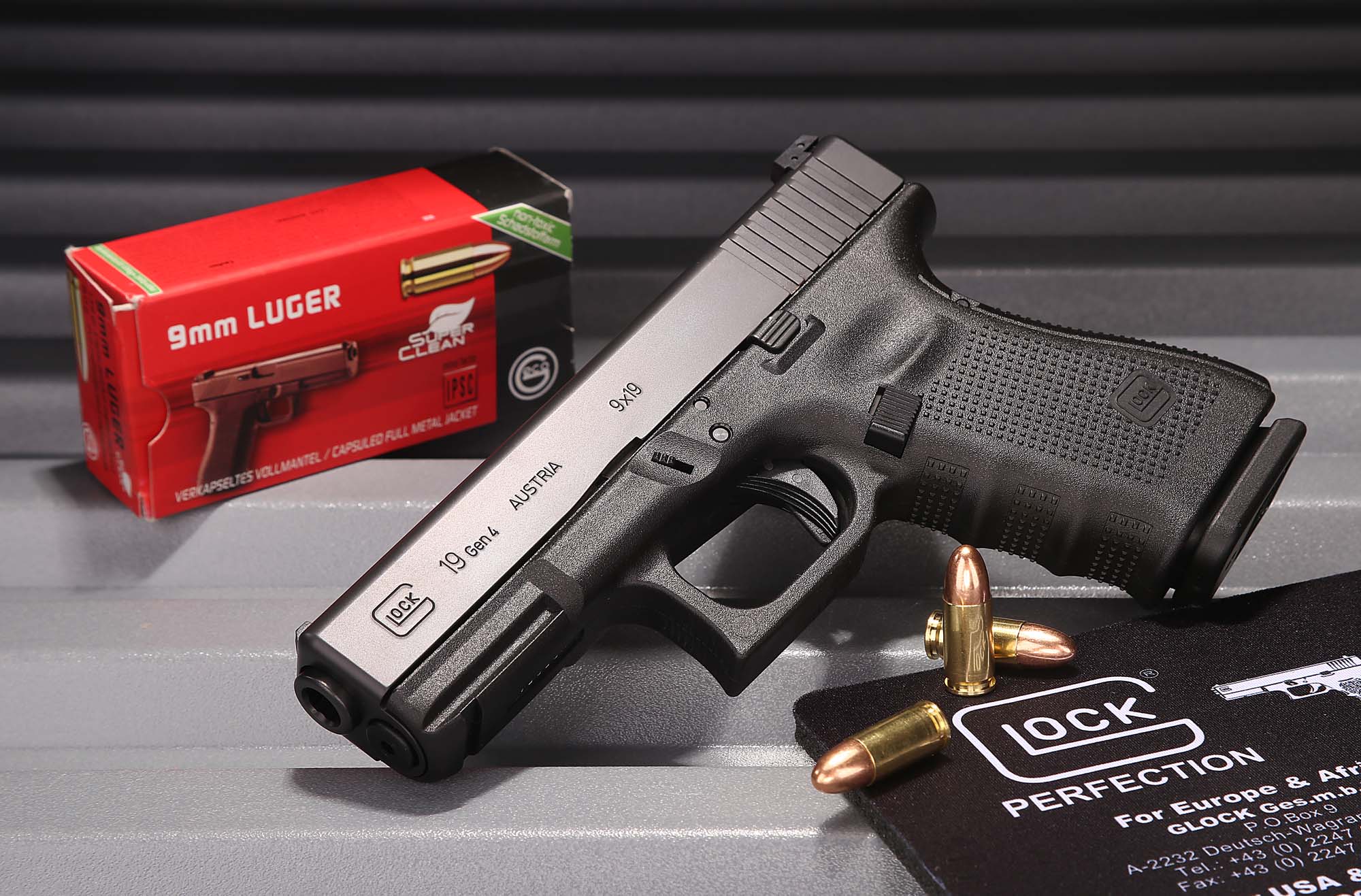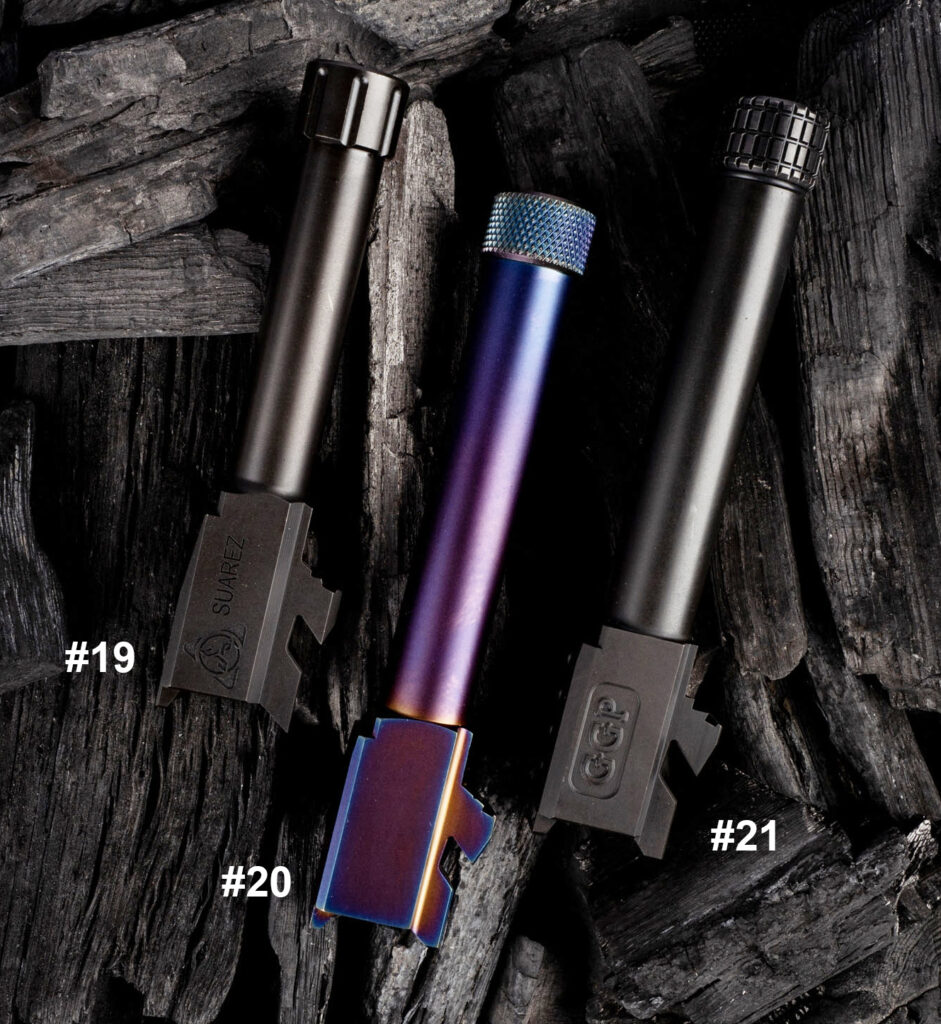Glock Barrel Rifling - Here are two words that anyone who starts modifying their Glock pistol will come across: polygonal rifling. It is launched very often without people really knowing what it is or what it does.
First, let's look at traditional rifling. Classic rifling uses land and grooves. The makers cut them into the barrel to "grab" the bullet and spin it down the barrel.
Glock Barrel Rifling

Polygonal rifling uses hills and valleys instead of sharp lands and furrows. The hill/valley configuration makes the barrel look like a hexagon or octagon. Both of these shapes are polygons, hence the name.
Shooting Review: The Glock 19 Gen 5
Polygonal rifling works by squeezing the bullet instead of cutting it like traditional rifling. Polygonal rifling is common in handgun barrels and is used by Glock (Gen 1-4), Walther, Heckler & Koch and many other companies.
Polygonal rifling guns have smaller barrel diameters than traditional rifling guns. This gives polygonal barrels a tighter gas seal on the bullet. That gas seal gives shotguns an advantage when it comes to generating muzzle velocity. You can see this phenomenon firsthand by chronographing a Beretta M9 against a Glock 34. With the same round, the 34 will consistently produce slightly higher velocities.
One of the biggest advantages of polygonal rifling is that it allows you to trace, contour and chamber a drilled barrel blank in one step. To do this, the drilled barrel blank is mounted on a fitting that has the reverse impressions of the rifling and chamber, then hammer forged to create the profile and rifling chamber. For large manufacturers who have access to hammer forges, this significantly reduces the cost of barrel production compared to traditional rifling.
Of course, there are some disadvantages to polygonal rifling. One of the major differences between traditional and polygonal rifling is that it is not a good idea to shoot lead bullets through polygonal rifling. In fact, Glock specifically says "don't do that" because it will void the warranty. But why wouldn't you? The short version is that lead bullets and some cheap jacketed bullets have the potential to cause excessive lead (or build up) in the bore pattern.
Cmc Glock 19 Fluted Barrel
When you shoot a lead bullet through a traditionally rifled barrel, the sand penetrates and cuts the bullet. That bullet leaves traces of lead in the grooves. This normal construction is minimal, safe and easy to clean. When you shoot a lead bullet into a polygonal rifled barrel, which has shallow hills and valleys instead of grooves and dips, the lead bullet is not pitted. Instead, the rifle is crushed by the rifle and the thick lead bullet "jumps" over hills. This leaves lead deposits throughout the barrel. As the gun fires each round, this process continues and streaky lead deposits build up, which in turn reduces the diameter of the barrel. This ultimately leads to higher chamber pressures, which can contribute to barrel blowing.
Interestingly, with the Gen 5 pistols, Glock has abandoned the polygonal rifling in favor of a more traditional rifling pattern in what they call their "shooter" barrel. HK still uses it in their handguns and unlike Glock they have no ban on using lead bullets in their barrels. We should also note that you can avoid the main problem by thoroughly cleaning your gun after firing lead bullets. However, gun cleaning is poor, so our recommendation is to follow the manufacturer's recommendations and stick to jacketed or jacketed bullets.
We put a bow on this article. What is polygonal rifling? Uses a polygonal barrel-shaped interior to spin the ball instead of traditional chips and grooves. How does it work? Crushing the bullet instead of cutting it. Is it cheaper to do? Only if you're a giant firearms maker with a hammer forge. Can I shoot lead bullets through it? You can do whatever you want, but you probably shouldn't. Bottom Line: Millions of guns use polygonal rifling, and they all seem to fit.

Gun barrel rifling, barrel rifling tool, barrel rifling, re rifling a barrel, polygonal rifling barrel makers, homemade barrel rifling machine, rifling a shotgun barrel, homemade barrel rifling tool, barrel rifling types, barrel rifling twist, polygonal rifling ar barrel, barrel rifling machine
0 Comments